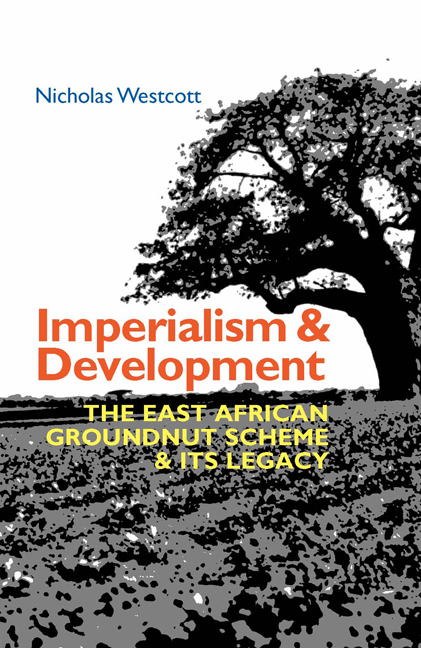Book contents
- Frontmatter
- Dedication
- Contents
- List of Illustrations
- List of Abbreviations
- Miscellaneous Frontmatter
- Preface and Acknowledgements
- Map
- Introduction
- 1 Austerity
- 2 A Scheme is Born
- 3 ‘The Poison of the Official Pen…’
- 4 The Groundnut Army
- 5 Beating about the Bush
- 6 The Overseas Food Corporation
- 7 1949: The Crisis
- 8 The Last Chance
- 9 A Sudden Death
- 10 Legacy and Lessons
- Bibliography
- Index
- Eastern African Studies
5 - Beating about the Bush
Published online by Cambridge University Press: 26 May 2022
- Frontmatter
- Dedication
- Contents
- List of Illustrations
- List of Abbreviations
- Miscellaneous Frontmatter
- Preface and Acknowledgements
- Map
- Introduction
- 1 Austerity
- 2 A Scheme is Born
- 3 ‘The Poison of the Official Pen…’
- 4 The Groundnut Army
- 5 Beating about the Bush
- 6 The Overseas Food Corporation
- 7 1949: The Crisis
- 8 The Last Chance
- 9 A Sudden Death
- 10 Legacy and Lessons
- Bibliography
- Index
- Eastern African Studies
Summary
Even as the men and material assembled, the process of actually clearing the bush and starting production was already under way. This chapter looks at the progress made and the difficulties encountered, as well as the kind of life the ‘groundnutters’ lived.
Bush-bashing
The African bush around Kongwa might have inspired the old Africa hands’ acronym, ‘MMBA – miles and miles of bloody Africa’. There were small patches of grassland, called mbugas, where there had once been lake beds. But the rest was a uniform low scrub of densely packed thorn bushes with the occasional giant baobab rising like an island from the tangled sea. No lush jungle this, but an impenetrable wilderness, almost never before farmed.
The first and greatest challenge was simply to clear the bush. Wakefield's plan proposed the clearing of 150,000 acres in the first year, and to do this with tractors – man mastering nature in an almost elemental way. By 1950, it was estimated the scheme would need 1,000 tractors in all. In the medium term, new tractors were ordered from Massey-Harris in Canada. But in the short term all that was available were 125 reconditioned caterpillar tractors from the UK, up to 300 army surplus bulldozers bought up second hand from the beaches of the Philippines and 50 old Lend-Lease tractors in the Middle East. As we have seen, simply getting them to Kongwa was difficult, but even when they arrived, many were found to be in a terrible state. ‘Reconditioning’ was a relative term, amounting in some cases to little more than a lick of paint; and many of those from the Philippines turned out to be too rusty to use. Before the railway extension was completed, they had to be driven the 20 miles from Msagali to Kongwa. Some did not make it, and stood like derelict sentinels along the road for years to come. Others made it, but never moved again, cannibalised for parts for their healthier brethren.
But some worked, and as soon as the first tractors arrived in Kongwa at the end of April 1947, ‘bush-bashing’ began.
- Type
- Chapter
- Information
- Imperialism and DevelopmentThe East African Groundnut Scheme and its Legacy, pp. 99 - 113Publisher: Boydell & BrewerPrint publication year: 2020



